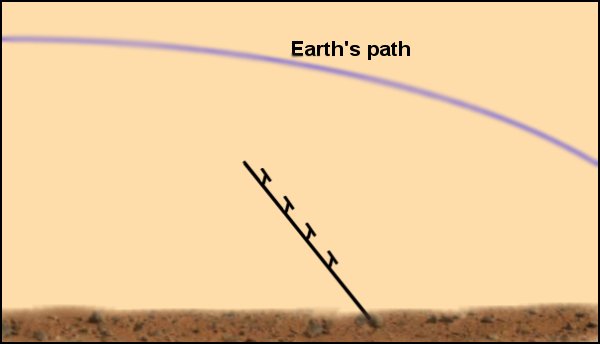
| We will get to Mars and establish a colony
there. Just when is the only unanswered question. As a radio amateur I
have been researching the possibility of two way amateur communications
between Earth and Mars. Not using very narrow band digital computer
programs but existing VHF or UHF FM radios. If it is at all possible,
make it available to as wide a number of amateurs as possible. No
The answer, after doing some
path loss calculation etc is no, it is not possible to use FM at modest
power levels to communicate with Mars. That is why relay satellites are
used to repeat the Mars based rovers. The satellites have high gain
antennas.
However
Before tossing the idea out some basic
calculations.
The two most
common amateur frequencies to consider is 146 MHz and 440 MHz. Most
amateurs own this type of equipment. I'm doing the calculations on 440
MHz.
Mars varies between 55 and 400 million kilometers from Earth.
This means that the path loss is between 240 dB and 257 dB....A
lot of dB's. Let us use the average of 248 dB.
Also using FM let us use 0.2uV as the minimum required signal strength, a bit noisy but readability 5. This equates to -120 dBm. Also let us assume 10 watts as the power used at both ends. This equates to -160 dBm path loss can exist for a 10 watt signal to be 0.2uV (-120 dBm). This is way short of the average pass loss of -248 dB. We are short by 88 dB, but this is dipole to dipole. Antenna Gain
On 450 Mhz, 20 db antenna gain is possible
with modest antennas. However at the Mars end this is not easy to
achieve, so let us assume 10 dB gain. This removes 30 dB from the
path loss, resulting in reducing the path loss to 190 dB, still way short of the -248 dB required. Short by 58 dB. At the Mars end to make it as simple as possible, not having to track the Earth is desirable. This may be possible, as Mars sees Earth along a narrow band across the sky, from Earth up to Earth set. This remains constant as far as I know. Hence a 4 dipole vertical array could be angled such that it has gain from horizon to horizon across a narrow band. Earth always being in it. No antenna tracking.  The antenna gain of the 4 dipole array
would be maximum, when tilted back, across Earth's track from horizon
to horizon.
More Power
More power needs to be added,
let us say 100 watts, that removes 10dB from the path loss, now being
short by 48 dB. Even at Mar's closest distance from Earth, we only
remove 8 dB, we are down to finding another 40 dB. Going to SSB may
pick up 6 dB at best, so we now have still to find 34 dB, but it
negates the, keep it available to as many amateurs as possible.
Is there a way...? The point of the discussion is
that smarter amateurs than I may see a mistake in my calculations, or a
way around the problem, without using computer enhancement programs.
The point was to make communications with Mars a possibility for
the average amateur who has a 2 metre or 70 cm FM transceiver.
If it worked how would
it work..?
There is considerable time
delay between Earth and Mars for a radio signal, and this is multiplied
by two for a reply. The minimum one way delay is about 4 minutes and
the maximum 24 minutes, depending on the varying Earth Mars distance.
So even when Mars is at its closest to Earth, it would take 8 minutes
to get a reply.
If a normal FM repeater was installed on Mars, then when a signal is received from earth it would be re-transmitted back to Earth. Hence with no intervention on Mars, you could hear your own signal come back. Yes a long wait but exciting. The earth based amateur setup would require all the antenna gain possible and the very best of everything to hear your own transmission "bounce" off Mars. But it look like it just is too many dBs between Mars and Earth for it to work at this simple "easy" level..... But that should not stop
amateurs thinking a way around the too many dBs
|